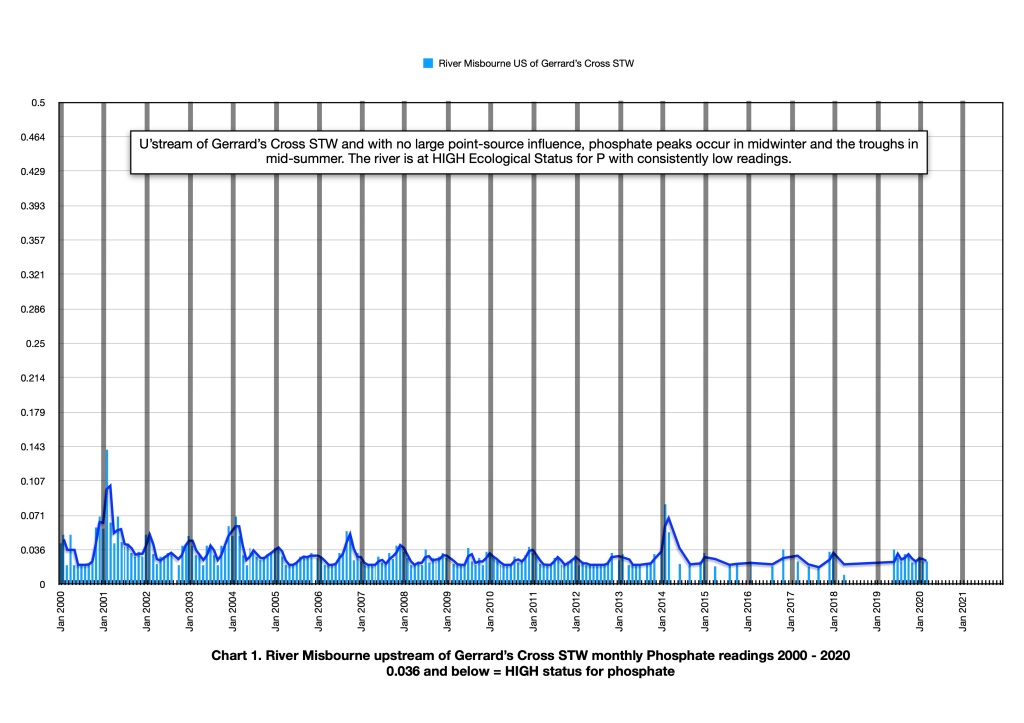I’ve been making charts of phosphate readings on chalk streams to try and get some sense of the comparative scale of point-source to diffuse pollution on different chalk streams. The Misbourne tells a clear story of this relative impact in a very populated part of the country. On other rivers, especially the chalk streams protected by designation, the picture is more nuanced. But the charts below speak for themselves: the sewage treatment works at Gerrard’s Cross on the River Misbourne (a chalk stream which also suffers from low flows) does not (to my knowledge) feature a phosphate stripper.
Not far upstream of the sewage works the EA Assessment point data shows consistently low phosphate readings, while downstream of the STW the readings are very high.
There are also some clear, and revealing patterns. Upstream the peaks, such as they are, clearly coincide with high flows in the mid-winter, whereas downstream the peaks coincide with low flows in late summer, indicating that the primary source of phosphate upstream is from diffuse, landscape sources while downstream the primary source is quite obviously the sewage treatment works.
The phosphate concentrations go up and down in inverse relationship to each other. At the upstream assessment point increasing flow leads to increasing amounts and concentration of phosphate, whereas downstream increasing flow decreases phosphate concentrations through the effect of dilution.







I was of the understanding that Phosphate capture was a legal requirement to run a Sewage treatment plant.
LikeLike
Hi Gerard, (sorry to take so long to both find and reply!) it is only a legal requirement on works covered by the Urban Wastewater Treatment Directive or other designations like SAC.
LikeLike
Dear Sir / Madam,
I am part of a small volunteer group working for Whitchurch Town Council in Hampshire. Our role is to look at the Nitrate levels in the river Test and water aquifer in the surrounding Whitchurch catchment area. We are also surrounded by farmland. Properties outside Whitchurch town will have septic tanks with soakage lines into the chalk aquifer.
Like many towns in Hampshire there has been pressure for housing development and we are concerned that it will have a detrimental increase in nitrate levels. The town sewage works uses old technology and there appears to be no nitrate mitigation equipment installed. All the drinking water in the area is supplied from the chalk aquifer. The town sewage works is approximately one mile from the river test and only slightly elevated above the river.
I am writing to you to ask if you have any information, which can help us to support our research. We are interested to understand how an increase in nitrate levels will affect the river test chalk stream.
Best regards,
David
LikeLike
Dear David,
I’m sorry for my delayed reply. There is information on this subject in our new CaBA chalk stream restoration strategy: https://catchmentbasedapproach.org/learn/chalk-stream-strategy/
Natural England has also published some excellent evidence based work on phosphorus and nitrogen in rivers.
You might also get in touch with your local river trust: https://www.wessexrt.org.uk
Thanks,
Charles.
LikeLike